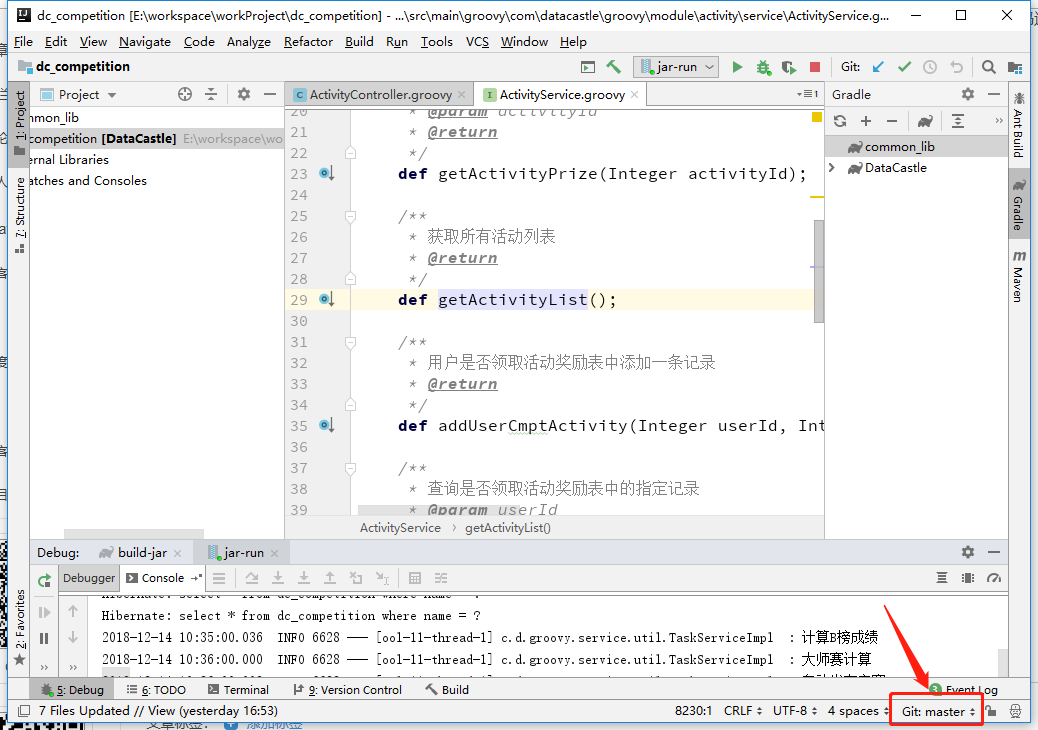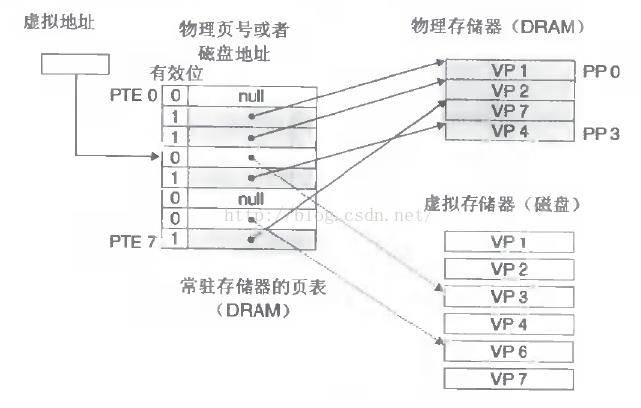使用注解的Hibernate one-to-many映射
One to many映射关系指的是两个实体间一个实体可以和多个实体有关联关系,但是多的这一端只能和一的这一端的一个实例有关系。它是一个1 到 n的关系。例如在任何的公司员工可以注册多个银行账户,一个银行账户只能和一个员工相关联,在这篇文章中我们将会学习怎么在Hibernate3中建立这种映射关系。
问题陈述
我们要写两个实体一个是Employee实体另一个是Account实体,这样多个银行账户就可以和一个员工关联了,但是这些账户不能被两个或以上的用户共享。
设计解决方案
这种问题可以使用两种方式解决。一种方式是在Account表中设置一个外键EMPLOYEE_ID,这一列指向Employee表的主键,这种方式没有两个账号可以和多个用户相关联,显然,为了完成这种限制,账号应该是独特的。另一种方式是建立一个连接表,比如说是叫EMPLOYEE_ACCOUNT,这个表有两列,EMP_ID作为EMPLOYEE表中主键的外键,对于ACCOUNT_ID也是这种情况。
使用外键连接
这种方式,两个实体都要负责建立关系并维护这种关系,EMPLOYEE实体应该申明的关系是one to many,Account实体应该声明的关系是many to one。首先来看一下关系设计:

EMPLOYEE实体
package hibernate.test.oneToMany.foreignKeyAsso;import java.io.Serializable;import java.util.Set;import javax.persistence.CascadeType;import javax.persistence.Column;import javax.persistence.Entity;import javax.persistence.GeneratedValue;import javax.persistence.GenerationType;import javax.persistence.Id;import javax.persistence.JoinColumn;import javax.persistence.OneToMany;import javax.persistence.Table;import javax.persistence.UniqueConstraint;@Entity(name = "ForeignKeyAssoEntity")@Table(name = "Employee", uniqueConstraints = {@UniqueConstraint(columnNames = "ID"),@UniqueConstraint(columnNames = "EMAIL") })public class EmployeeEntity implements Serializable {private static final long serialVersionUID = -1798070786993154676L;@Id@GeneratedValue(strategy = GenerationType.IDENTITY)@Column(name = "ID", unique = true, nullable = false)private Integer employeeId;@Column(name = "EMAIL", unique = true, nullable = false, length = 100)private String email;@Column(name = "FIRST_NAME", unique = false, nullable = false, length = 100)private String firstName;@Column(name = "LAST_NAME", unique = false, nullable = false, length = 100)private String lastName;@OneToMany(cascade=CascadeType.ALL)@JoinColumn(name="EMPLOYEE_ID")private Set<AccountEntity> accounts;public Integer getEmployeeId() {return employeeId;}public void setEmployeeId(Integer employeeId) {this.employeeId = employeeId;}public String getEmail() {return email;}public void setEmail(String email) {this.email = email;}public String getFirstName() {return firstName;}public void setFirstName(String firstName) {this.firstName = firstName;}public String getLastName() {return lastName;}public void setLastName(String lastName) {this.lastName = lastName;}public Set<AccountEntity> getAccounts() {return accounts;}public void setAccounts(Set<AccountEntity> accounts) {this.accounts = accounts;}}
Account实体
package hibernate.test.oneToMany.foreignKeyAsso;import java.io.Serializable;import javax.persistence.Column;import javax.persistence.Entity;import javax.persistence.GeneratedValue;import javax.persistence.GenerationType;import javax.persistence.Id;import javax.persistence.ManyToOne;import javax.persistence.Table;import javax.persistence.UniqueConstraint;@Entity(name = "ForeignKeyAssoAccountEntity")@Table(name = "ACCOUNT", uniqueConstraints = {@UniqueConstraint(columnNames = "ID")})public class AccountEntity implements Serializable{private static final long serialVersionUID = -6790693372846798580L;@Id@GeneratedValue(strategy = GenerationType.IDENTITY)@Column(name = "ID", unique = true, nullable = false)private Integer accountId;@Column(name = "ACC_NUMBER", unique = true, nullable = false, length = 100)private String accountNumber;@ManyToOneprivate EmployeeEntity employee;public Integer getAccountId() {return accountId;}public void setAccountId(Integer accountId) {this.accountId = accountId;}public String getAccountNumber() {return accountNumber;}public void setAccountNumber(String accountNumber) {this.accountNumber = accountNumber;}public EmployeeEntity getEmployee() {return employee;}public void setEmployee(EmployeeEntity employee) {this.employee = employee;}}
测试代码
package hibernate.test.oneToMany;import hibernate.test.HibernateUtil;import hibernate.test.oneToMany.foreignKeyAsso.AccountEntity;import hibernate.test.oneToMany.foreignKeyAsso.EmployeeEntity;import java.util.HashSet;import java.util.Set;import org.hibernate.Session;public class TestForeignKeyAssociation{public static void main(String[] args){Session session = HibernateUtil.getSessionFactory().openSession();session.beginTransaction();AccountEntity account1 = new AccountEntity();account1.setAccountNumber("Account detail 1");AccountEntity account2 = new AccountEntity();account2.setAccountNumber("Account detail 2");AccountEntity account3 = new AccountEntity();account3.setAccountNumber("Account detail 3");//Add new Employee objectEmployeeEntity firstEmployee = new EmployeeEntity();firstEmployee.setEmail("demo-user-first@mail.com");firstEmployee.setFirstName("demo-one");firstEmployee.setLastName("user-one");EmployeeEntity secondEmployee = new EmployeeEntity();secondEmployee.setEmail("demo-user-second@mail.com");secondEmployee.setFirstName("demo-two");secondEmployee.setLastName("user-two");Set<AccountEntity> accountsOfFirstEmployee = new HashSet<AccountEntity>();accountsOfFirstEmployee.add(account1);accountsOfFirstEmployee.add(account2);Set<AccountEntity> accountsOfSecondEmployee = new HashSet<AccountEntity>();accountsOfSecondEmployee.add(account3);firstEmployee.setAccounts(accountsOfFirstEmployee);secondEmployee.setAccounts(accountsOfSecondEmployee);//Save Employeesession.save(firstEmployee);session.save(secondEmployee);session.getTransaction().commit();HibernateUtil.shutdown();}}Output:Hibernate: insert into Employee (EMAIL, FIRST_NAME, LAST_NAME) values (?, ?, ?)Hibernate: insert into ACCOUNT (ACC_NUMBER, employee_ID) values (?, ?)Hibernate: insert into ACCOUNT (ACC_NUMBER, employee_ID) values (?, ?)Hibernate: insert into Employee (EMAIL, FIRST_NAME, LAST_NAME) values (?, ?, ?)Hibernate: insert into ACCOUNT (ACC_NUMBER, employee_ID) values (?, ?)Hibernate: update ACCOUNT set EMPLOYEE_ID=? where ID=?Hibernate: update ACCOUNT set EMPLOYEE_ID=? where ID=?Hibernate: update ACCOUNT set EMPLOYEE_ID=? where ID=?
使用关联表
这种方式使用关联表存储两个实体间的关系@JoinTable注解是用来建立这种关系的,先来看一下数据库模式

EMPLOYEE实体
package hibernate.test.oneToMany.joinTable;import java.io.Serializable;import java.util.Set;import javax.persistence.CascadeType;import javax.persistence.Column;import javax.persistence.Entity;import javax.persistence.GeneratedValue;import javax.persistence.GenerationType;import javax.persistence.Id;import javax.persistence.JoinColumn;import javax.persistence.JoinTable;import javax.persistence.OneToMany;import javax.persistence.Table;import javax.persistence.UniqueConstraint;@Entity(name = "JoinTableEmployeeEntity")@Table(name = "Employee", uniqueConstraints = {@UniqueConstraint(columnNames = "ID"),@UniqueConstraint(columnNames = "EMAIL") })public class EmployeeEntity implements Serializable{private static final long serialVersionUID = -1798070786993154676L;@Id@GeneratedValue(strategy = GenerationType.IDENTITY)@Column(name = "ID", unique = true, nullable = false)private Integer employeeId;@Column(name = "EMAIL", unique = true, nullable = false, length = 100)private String email;@Column(name = "FIRST_NAME", unique = false, nullable = false, length = 100)private String firstName;@Column(name = "LAST_NAME", unique = false, nullable = false, length = 100)private String lastName;@OneToMany(cascade=CascadeType.ALL)@JoinTable(name="EMPLOYEE_ACCOUNT", joinColumns={@JoinColumn(name="EMPLOYEE_ID", referencedColumnName="ID")}, inverseJoinColumns={@JoinColumn(name="ACCOUNT_ID", referencedColumnName="ID")})private Set<AccountEntity> accounts;public Integer getEmployeeId() {return employeeId;}public void setEmployeeId(Integer employeeId) {this.employeeId = employeeId;}public String getEmail() {return email;}public void setEmail(String email) {this.email = email;}public String getFirstName() {return firstName;}public void setFirstName(String firstName) {this.firstName = firstName;}public String getLastName() {return lastName;}public void setLastName(String lastName) {this.lastName = lastName;}public Set<AccountEntity> getAccounts() {return accounts;}public void setAccounts(Set<AccountEntity> accounts) {this.accounts = accounts;}}
Account实体
package hibernate.test.oneToMany.joinTable;import java.io.Serializable;import javax.persistence.Column;import javax.persistence.Entity;import javax.persistence.GeneratedValue;import javax.persistence.GenerationType;import javax.persistence.Id;import javax.persistence.Table;import javax.persistence.UniqueConstraint;@Entity(name = "JoinTableAccountEntity")@Table(name = "ACCOUNT", uniqueConstraints = {@UniqueConstraint(columnNames = "ID")})public class AccountEntity implements Serializable{private static final long serialVersionUID = -6790693372846798580L;@Id@GeneratedValue(strategy = GenerationType.IDENTITY)@Column(name = "ID", unique = true, nullable = false)private Integer accountId;@Column(name = "ACC_NUMBER", unique = true, nullable = false, length = 100)private String accountNumber;public Integer getAccountId() {return accountId;}public void setAccountId(Integer accountId) {this.accountId = accountId;}public String getAccountNumber() {return accountNumber;}public void setAccountNumber(String accountNumber) {this.accountNumber = accountNumber;}}
在配置文件中配置实体,我们已经有了两个在运行时的实体,我们必须在配置文件中增加他们。请注意只有一个集合实体可以在配置文件中配置,否则会有意外的情况发生
< ?xml version="1.0" encoding="utf-8"?>< !DOCTYPE hibernate-configuration PUBLIC"-//Hibernate/Hibernate Configuration DTD 3.0//EN""http://hibernate.sourceforge.net/hibernate-configuration-3.0.dtd"><hibernate-configuration><session-factory><property name="hibernate.connection.driver_class">com.mysql.jdbc.Driver</property><property name="hibernate.connection.url">jdbc:mysql://localhost:3306/hibernatetest</property><property name="hibernate.connection.password">XXXXXX</property><property name="hibernate.connection.username">root</property><property name="hibernate.dialect">org.hibernate.dialect.MySQLDialect</property><property name="show_sql">true</property><property name="hbm2ddl.auto">create</property><mapping clas="hibernate.test.oneToMany.foreignKeyAsso.AccountEntity"></mapping><mapping clas="hibernate.test.oneToMany.foreignKeyAsso.EmployeeEntity"></mapping></session-factory></hibernate-configuration>
测试代码:
package hibernate.test.oneToMany;import hibernate.test.HibernateUtil;import hibernate.test.oneToMany.joinTable.AccountEntity;import hibernate.test.oneToMany.joinTable.EmployeeEntity;import java.util.HashSet;import java.util.Set;import org.hibernate.Session;public class TestJoinTable{public static void main(String[] args){Session session = HibernateUtil.getSessionFactory().openSession();session.beginTransaction();AccountEntity account1 = new AccountEntity();account1.setAccountNumber("123-345-65454");AccountEntity account2 = new AccountEntity();account2.setAccountNumber("123-345-6542222");//Add new Employee objectEmployeeEntity emp = new EmployeeEntity();emp.setEmail("demo-user@mail.com");emp.setFirstName("demo");emp.setLastName("user");Set<AccountEntity> accounts = new HashSet<AccountEntity>();accounts.add(account1);accounts.add(account2);emp.setAccounts(accounts);//Save Employeesession.save(emp);session.getTransaction().commit();HibernateUtil.shutdown();}}Output:Hibernate: insert into Employee (EMAIL, FIRST_NAME, LAST_NAME) values (?, ?, ?)Hibernate: insert into ACCOUNT (ACC_NUMBER) values (?)Hibernate: insert into ACCOUNT (ACC_NUMBER) values (?)Hibernate: insert into EMPLOYEE_ACCOUNT (EMPLOYEE_ID, ACCOUNT_ID) values (?, ?)Hibernate: insert into EMPLOYEE_ACCOUNT (EMPLOYEE_ID, ACCOUNT_ID) values (?, ?)
可以在原文中下载源码,原文链接:http://howtodoinjava.com/2012/11/17/hibernate-one-to-many-mapping-using-annotations/
关注我,获取400个的赚钱金点子,轻松开启程序员的副业生涯




































还没有评论,来说两句吧...